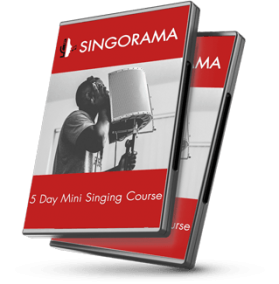Disappointed with your limited vocal range?
Worry no-more. Break through your vocal barriers using these proven singing techniques, and before you know it you will be singing higher and lower in no time.
Pinpointing your natural Singing range.
Typically, the most common singing ranges are: soprano, alto, tenor, baritone, and bass. Most men fall into the bottom 3 ranges and most women fall into the top 3.
Using a Piano or keyboard, begin with singing a middle C with the normal tone of your voice. This will help you identify you natural range.
Sing moving down the scale in half steps until you can’t sing low notes very easily. Now return to middle C and do the same exercise only moving up the scale until you get to high notes you can no longer sing comfortably.
Natural soprano’s can easily sing notes at middle C to high A. Natural alto’s easily sing notes between G3 – F5. Tenor’s comfortably hit notes from C3 – A4. Baritones range between G2 – F4. Bass prefer F2 – E4.
Once you have pinpointed your natural singing range, you can start to set goals for pushing past your barriers.
Always Practice.
Just like working out at the gym, you make gains with being consistent. The sae goes with your vocal workouts. Try to sing as often as you can with out straining your vocal chords.
Always test the boundaries of your voice by singing songs that are a little out of your comfort zone. Try to always go a little lower or higher each day.
This can take some time to see your gains if you have no consistency, so make sure you do this daily for faster results.
Working on your mixed voice.
All singers have a natural breaking point when singing scales where they switch from their chest voice to their head voice. This transition can be made smoother when you learn to develop your mixed voice or sometimes called your middle voice.
Take note when singing up on your scales and you reach the final notes you can comfortably sing in your chest voice – these notes on the scale will be the notes you’ll practice vocalising in your mixed voice.
Mastering your mixed or middle voice means you will easily be able to transition up and down the scale without breaks.
Depending on your voice, this may take some time to master… Don’t let it get you down as there are many successful professional singers still trying to pinpoint their ideal middle voice.
Resonation Exercises.
Begin your scale at the low end of your singing limit. Vocalise the note in your chest voice with normal volume. Singing the word “whom” – feel the resonation within your throat.
Next is to vocalise your highest note using the same word “whom” – focus on feeling the resonation moving between your mouth and your throat. Go to the next note and take notice of its resonation.
make sure to keep the volume steady throughout the whole routine. Practice the transition from your head register back down to your chest register staying within the edges of your break range.
Once you have been practicing for around 7 days, you’ll see your transitions becoming a lot smoother. If you keep practicing you’ll see your vocal range break through to a whole new octave all while maintaining quality tone and discipline.
Always remember to warm-up before you start! Forgetting to do so may result in strain or even damage to your voice.



